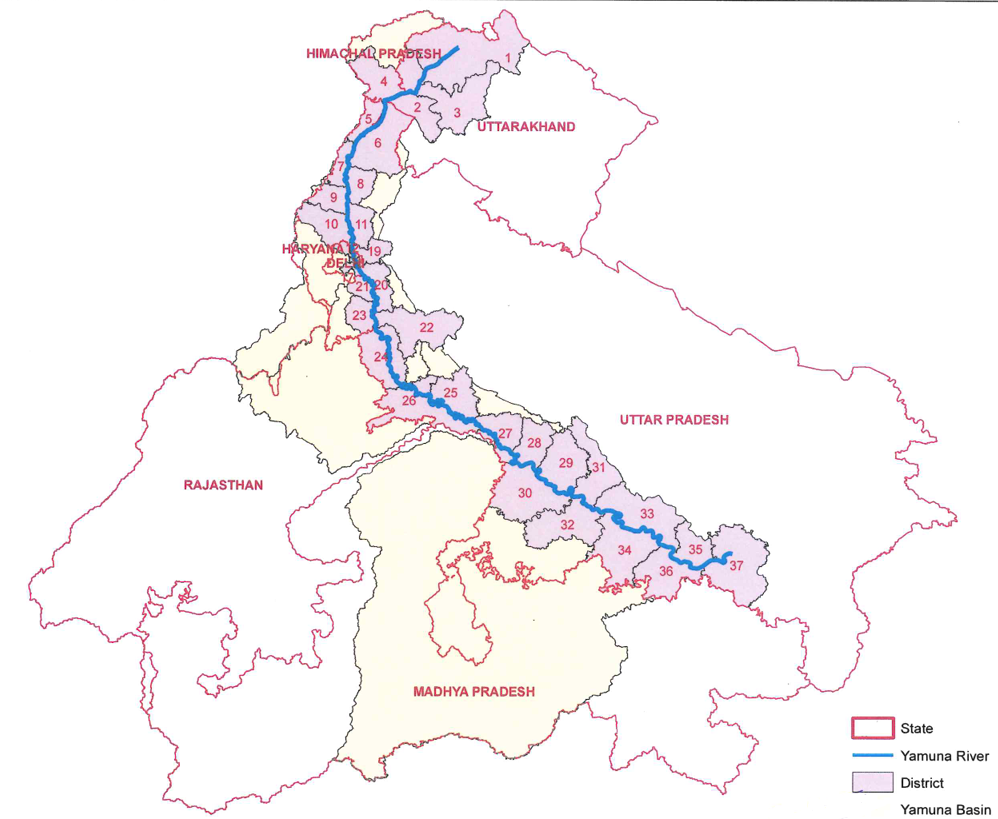New Delhi – The National Mission for Clean Ganga (NMCG), an apex body under the Ministry of Jal Shakti tasked with rejuvenating the Ganga and its tributaries, has approved a comprehensive plan to conserve and sustainably manage the floodplain wetlands of the Yamuna River in Delhi. Alongside this, the NMCG has greenlit the preparation of an Urban River Management Plan (URMP) for the national capital, a flagship initiative under the River Cities Alliance (RCA), launched in 2021 to rejuvenate urban rivers across India.

According to an official note from the NMCG’s executive committee, dated July 16, 2025, and circulated to central ministries and state governments, the wetlands conservation project will focus on all wetlands within a 10-kilometer buffer zone along the Yamuna River. The initiative aims to strengthen ecosystem management and enhance the river’s overall health through a detailed inventory and assessment of these wetlands. This project aligns with the broader objectives of the Namami Gange Programme, launched in 2014, which emphasizes pollution abatement, ecological restoration, and biodiversity conservation for the Ganga and its tributaries, including the Yamuna.
A dedicated oversight committee, comprising representatives from the Wetland Authority of Delhi, the Union Environment Ministry, the Delhi Development Authority (DDA), NMCG, and Wetland International South Asia, will ensure the project’s smooth implementation. The key components of the wetlands conservation plan include:
- Mapping and Data Collection: Creating a wetlands map at a 1:10,000 scale and compiling 20-year wetland change data to track long-term ecological trends.
- Comprehensive Inventory: Documenting physical features, hydrological regimes, and ecological data for all surveyed wetlands to establish a robust knowledge base.
- Ecosystem Health Cards: Developing health cards to assess the condition of individual wetlands, aiding in monitoring and restoration efforts.
- Prioritization Matrix and Management Plans: Formulating a prioritization matrix to identify critical wetlands for targeted conservation and creating tailored management plans for prioritized wetlands.
- Capacity Building: Training wetland managers to enhance their skills in sustainable wetland management and conservation practices.
Also Read: Delhi’s Yamuna Rejuvenation Plan: Riverfront Vision or Ecological Gamble?
The URMP for Delhi, implemented by the National Institute of Urban Affairs (NIUA), will integrate sustainable water governance into the city’s master plan, with a focus on the safe reuse of treated water. IIT-Delhi will support the URMP through a Centre of Excellence established under an NMCG-IITD Dutch collaboration. The project is targeted for completion by December 2026.
The wetlands conservation initiative builds on the NMCG’s broader efforts to restore the Yamuna, which accounts for nearly 80% of its pollution in the 22-kilometer stretch from Wazirabad to Okhla barrage in Delhi, despite this segment being less than 2% of the river’s total length. The NMCG has previously supported projects under the Yamuna Action Plan (YAP), a bilateral initiative with Japan since 1993, which has focused on increasing sewage treatment capacity and addressing pollution from rapid urbanization and industrialization.
Additionally, the NMCG is addressing floodplain encroachments, a significant challenge to wetland conservation. A 30-point action plan, finalized after a high-level meeting chaired by Prime Minister Narendra Modi on April 16, 2025, includes measures to remove encroachments by September 2026, enhance environmental flow, and create additional sewage treatment capacity of approximately 500 million liters per day (MLD) by March 2029. This plan involves collaboration with agencies like the DDA, Central Pollution Control Board (CPCB), and Delhi Jal Board (DJB).
The National Green Tribunal (NGT) has also played a critical role in safeguarding the Yamuna’s floodplains. In January 2025, the NGT directed the DDA to deconcretize six ongoing projects on the Yamuna floodplain, including Asita East and Vasudev Ghat, following NMCG recommendations to replace concrete pathways with porous materials to preserve ecological integrity. These efforts underscore the importance of maintaining natural floodplains to support wetland ecosystems.
Under the RCA, the NMCG approved an action plan in April 2025 for 145 cities along various rivers, including Agra, Ayodhya, Kanpur, Varanasi, Dehradun, and Patna, to promote river-sensitive urban development. Of these, 14 are in Uttarakhand, 25 in Uttar Pradesh, 20 in Bihar, 14 in Jharkhand, 32 in West Bengal, and 40 in other states. Cities like Kanpur, Ayodhya, and Moradabad have already developed their URMPs, setting a benchmark for others. The NMCG aims to complete 25 additional URMPs this year, with a target of 60 plans by December 2026, at a cost exceeding ₹21 crore.
The approval of the Yamuna floodplain wetlands conservation plan and the URMP marks a pivotal step toward restoring the ecological health of the Yamuna, a river of immense cultural, spiritual, and socioeconomic significance, which supports over 57 million people and provides more than 70% of Delhi’s water supply. These initiatives reflect a concerted effort to address pollution, protect biodiversity, and foster sustainable urban river management across India.
Sources: Official note from the National Mission for Clean Ganga, dated July 16, 2025; The Economic Times, July 20, 2025; The Indian Express, May 2, 2025; Hindustan Times, January 23, 2025; Wikipedia, Yamuna Action Plan, October 12, 2007.
